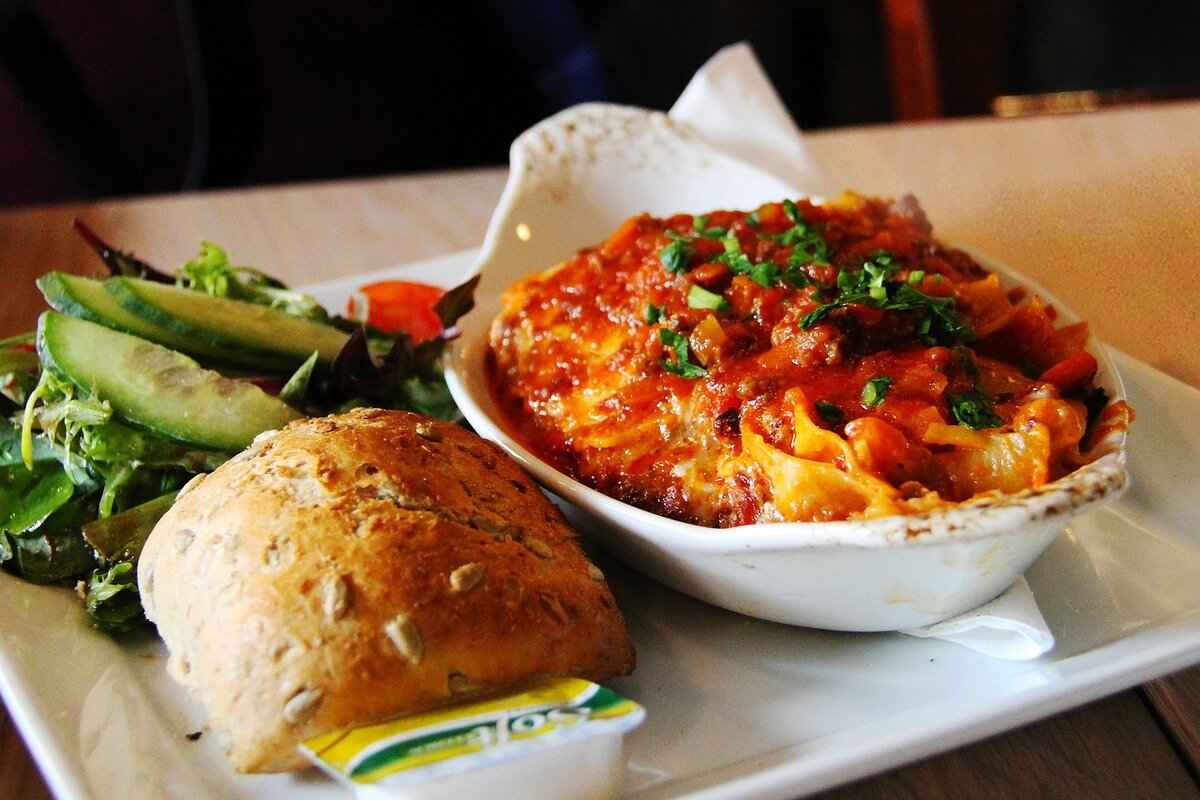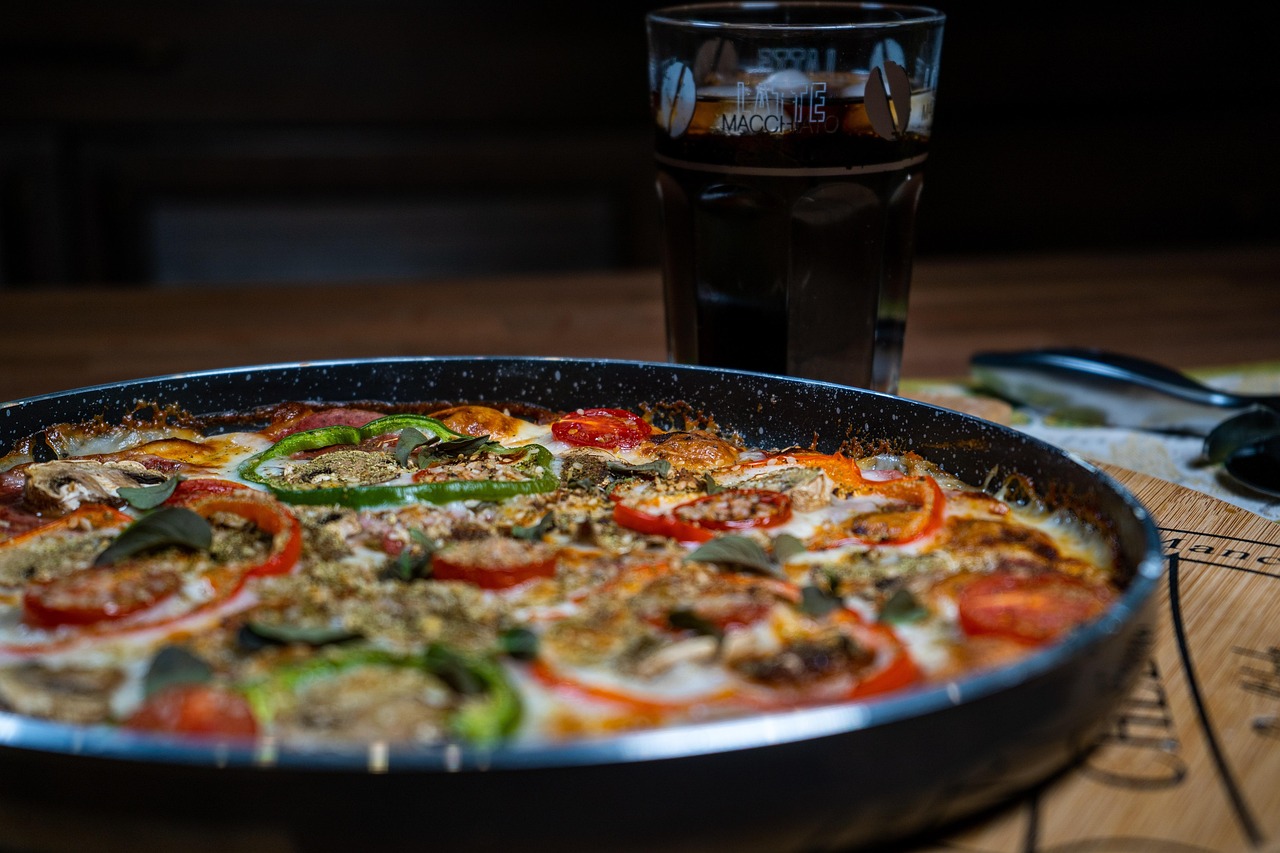This article provides essential insights and practical tips for aspiring entrepreneurs looking to start their own Italian restaurant, covering everything from concept development to operational success.
Understanding the Italian Cuisine Landscape
Exploring the diverse world of Italian cuisine is crucial for any restaurant owner. Italy boasts a rich tapestry of regional variations, from the creamy risottos of the North to the spicy pasta dishes of the South. Popular dishes such as Lasagna, Pizza Napoletana, and Osso Buco should be considered for your menu. Additionally, staying updated with current trends, such as the rise of plant-based Italian dishes and farm-to-table approaches, can help shape your offerings and attract a modern clientele.
Creating a Unique Restaurant Concept
A unique concept can set your Italian restaurant apart from the competition. Consider crafting an appealing theme that reflects specific Italian regions or culinary traditions. The ambiance, decor, and even the staff uniforms should resonate with your target audience. For example, a rustic trattoria vibe can evoke the charm of a countryside eatery, while a modern Italian bistro could attract a younger crowd. Emphasizing authenticity in every aspect of your restaurant will enhance customer experience and loyalty.
Conducting Market Research
Market research is vital for understanding your competition and customer preferences. Utilize surveys, focus groups, and social media analytics to gather data on local dining habits. Analyzing competitors can provide insights into successful menu items and pricing strategies. Additionally, understanding your target demographic—age, income level, and dining preferences—will help you tailor your offerings effectively.
Choosing the Right Location
Location can make or break a restaurant’s success. When selecting a site, consider foot traffic, visibility, and accessibility. Areas with high pedestrian traffic, such as near shopping districts or universities, can be advantageous. Additionally, analyzing the demographics of the neighborhood will help you determine if your concept aligns with local preferences. Proximity to competitors can also play a role; being close to similar establishments can create a culinary hub, while being too close may dilute your customer base.
Developing a Business Plan
A solid business plan is essential for guiding your restaurant’s launch and operations. Key components include financial projections, marketing strategies, and operational plans. Outline your startup costs, including equipment, staffing, and initial inventory. A comprehensive marketing strategy should detail how you will attract and retain customers, whether through social media campaigns, local partnerships, or community events. Regularly revisiting and updating your business plan will ensure you stay on track and adapt to changing market conditions.
Securing Funding for Your Restaurant
Funding is often a significant hurdle for new restaurant owners. Explore various financing options, including traditional bank loans, private investors, or crowdfunding platforms. Each option has its pros and cons, so it’s essential to assess which aligns best with your business model. Additionally, consider applying for grants specifically aimed at small businesses in the food industry, as these can provide much-needed capital without the burden of repayment.
Designing Your Restaurant Space
The design of your restaurant influences customer experience significantly. Focus on creating a layout that encourages flow and comfort. Consider elements such as lighting, seating arrangements, and decor that reflect your restaurant’s theme. An inviting atmosphere can enhance customer satisfaction and encourage repeat visits. Additionally, ensure that your kitchen layout is efficient for staff, as this can impact service speed and quality.
Crafting a Winning Menu
A well-thought-out menu is crucial for attracting customers. Focus on menu design that is easy to read and visually appealing. Pricing strategies should reflect your target market while ensuring profitability. Incorporating seasonal ingredients can not only enhance flavor but also align with current food trends, appealing to environmentally conscious diners. Offering daily specials or tasting menus can also keep your offerings fresh and exciting.
Hiring and Training Staff
Your staff plays a vital role in your restaurant’s success. Implement effective hiring practices to attract skilled individuals who share your vision. Consider conducting thorough interviews and practical tests to assess their capabilities. Once hired, invest in comprehensive training that emphasizes customer service, menu knowledge, and food safety standards. A well-trained team can significantly enhance the overall dining experience and contribute to your restaurant’s reputation.
Implementing Marketing Strategies
Effective marketing can drive customers to your restaurant. Consider leveraging social media platforms to showcase your dishes and engage with your audience. Collaborating with local businesses for cross-promotions can also increase visibility. Hosting promotional events, such as wine tastings or cooking classes, can attract new customers and create buzz around your restaurant. Regularly assessing the effectiveness of your marketing strategies will help you refine your approach and maximize outreach.
Ensuring Compliance with Regulations
Compliance with health and safety regulations is non-negotiable. Familiarize yourself with the necessary permits and inspections required to operate an Italian restaurant legally. This includes food safety certifications, health department permits, and liquor licenses if applicable. Staying informed about local regulations will help you avoid costly fines and ensure a safe dining environment for your customers.
Measuring Success and Making Adjustments
Continuously measuring success is key to long-term viability. Implement systems to track performance metrics such as sales, customer feedback, and employee satisfaction. Regularly reviewing these metrics will help you identify areas for improvement and make necessary adjustments to enhance operations and customer satisfaction. Adapting to feedback and changing market conditions will ensure your restaurant remains relevant and successful.

Understanding the Italian Cuisine Landscape
is essential for anyone looking to venture into the world of Italian dining. Italian cuisine is not just a single entity; it is a rich tapestry woven from the diverse culinary traditions of various regions across Italy. Each region boasts its own unique flavors, ingredients, and cooking techniques, making it crucial for restaurant owners to appreciate these variations when crafting their menus.
The regional variations in Italian cuisine reflect the geography, climate, and history of each area. For instance, the northern regions, such as Lombardy and Veneto, are known for their creamy risottos and polenta, while the southern regions, like Campania and Sicily, favor fresh tomatoes, olive oil, and seafood. Understanding these distinctions can help restaurant owners create authentic dishes that resonate with customers.
When it comes to popular dishes, classics like pizza, pasta, and lasagna are often at the forefront. However, there are countless regional specialties that can add depth to a menu. For example, Ossobuco from Lombardy is a braised veal shank, while Arancini, stuffed rice balls from Sicily, offer a delightful appetizer option. By incorporating these regional dishes, restaurant owners can provide a more comprehensive dining experience.
Moreover, staying updated on current trends in Italian cuisine is vital. The rise of the farm-to-table movement emphasizes the use of fresh, locally sourced ingredients, which is particularly relevant in Italian cooking. Additionally, there is a growing interest in health-conscious dishes, leading to the creation of lighter pasta options or gluten-free alternatives. Understanding these trends allows restaurant owners to adapt their menus to meet evolving customer preferences.
Another aspect to consider is the increasing popularity of Italian street food. Items like panzerotti and supplì are gaining traction, especially among younger diners seeking casual dining experiences. By integrating these trendy dishes into the menu, restaurant owners can attract a broader audience.
In summary, a deep understanding of the Italian cuisine landscape is crucial for restaurant owners. By exploring regional variations, popular dishes, and current trends, they can create a menu that not only honors traditional Italian cooking but also appeals to modern diners. This approach not only enhances the dining experience but also positions the restaurant for long-term success in a competitive market.

Creating a Unique Restaurant Concept
Creating a unique restaurant concept is essential for standing out in the competitive Italian dining scene. A well-defined concept not only attracts customers but also establishes a strong identity that resonates with your target audience. Here, we will explore how to develop an engaging theme, atmosphere, and identity that can set your Italian restaurant apart.
A unique concept serves as the foundation of your restaurant’s identity. It helps to differentiate your establishment from others and can create a memorable experience for guests. When customers can connect emotionally with a restaurant’s theme, they are more likely to return and recommend it to others. This emotional connection can be fostered through various elements such as decor, menu design, and service style.
The theme of your restaurant should reflect the essence of Italian culture while appealing to your target demographic. Consider incorporating elements such as:
- Regional Focus: Highlight specific regions of Italy, such as Tuscany or Sicily, to create a menu that showcases regional specialties.
- Historical Context: Use decor and menu items that tell a story about Italian heritage, perhaps focusing on traditional family recipes.
- Modern Twist: Blend traditional Italian elements with contemporary trends to attract a younger audience.
The atmosphere of your restaurant is crucial for providing a comfortable dining experience. Consider the following aspects:
- Lighting: Use warm, soft lighting to create an intimate setting, reminiscent of a cozy Italian trattoria.
- Seating Arrangement: Design the layout to encourage social interaction, with communal tables or cozy nooks.
- Sound: Curate a playlist that features traditional Italian music, enhancing the dining experience.
Your restaurant’s identity should be reflected in every aspect of the business, from branding to customer service. Key components include:
- Logo and Branding: Create a logo that embodies your theme and is easily recognizable.
- Staff Training: Ensure that your staff embodies the spirit of your restaurant, providing service that reflects your unique concept.
- Community Engagement: Build relationships with local suppliers and participate in community events to strengthen your identity.
Before fully launching your restaurant, it’s wise to test your concept. Consider hosting soft openings or pop-up events to gather feedback. This will allow you to:
- Refine Your Menu: Adjust dishes based on customer preferences and feedback.
- Evaluate Atmosphere: Get insights on the ambiance and make necessary changes.
- Assess Service: Train staff according to customer reactions and expectations.
By focusing on these elements, you can create a unique restaurant concept that not only stands out but also resonates with your audience. A well-crafted theme, inviting atmosphere, and strong identity will not only attract customers but also foster loyalty, ensuring the long-term success of your Italian restaurant.

Conducting Market Research
Market research is a crucial step in launching a successful Italian restaurant. Understanding your competition and customer preferences can significantly influence your restaurant’s positioning and offerings. This section explores effective strategies for gathering data that will inform your business decisions.
Why Is Market Research Important?
Market research provides valuable insights into the restaurant industry, helping you identify trends, customer preferences, and potential gaps in the market. By analyzing your competition, you can determine what works well in your area and what does not. This knowledge allows you to tailor your offerings to meet customer needs and stand out in a crowded marketplace.
Effective Strategies for Gathering Data
- Surveys and Questionnaires: Create surveys to gather feedback from potential customers. Ask about their dining preferences, favorite Italian dishes, and what they look for in a restaurant experience.
- Focus Groups: Organize focus groups with a diverse range of participants to discuss their thoughts on your restaurant concept, menu ideas, and pricing. This qualitative data can provide deeper insights into customer motivations.
- Competitor Analysis: Analyze local competitors by visiting their establishments, reviewing their menus, and observing customer interactions. Take note of their strengths and weaknesses to identify opportunities for differentiation.
- Online Research: Utilize online tools and platforms to analyze industry trends and consumer behavior. Websites like Yelp, Google Reviews, and social media can provide valuable customer feedback and insights.
- Industry Reports: Invest in industry reports that provide comprehensive data on market trends, consumer preferences, and economic factors affecting the restaurant industry.
Utilizing Data for Strategic Decisions
Once you have gathered sufficient data, it’s essential to analyze and interpret the results. Look for patterns that indicate customer preferences and emerging trends. For instance, if your research shows a growing demand for plant-based Italian dishes, consider incorporating such options into your menu. Additionally, use the insights gained from competitor analysis to refine your restaurant’s unique selling proposition (USP) and marketing strategies.
Continuous Market Research
Market research is not a one-time task; it should be an ongoing process. Regularly collecting feedback from customers and staying updated on industry trends will help you adapt to changing preferences and maintain a competitive edge. Consider implementing a feedback loop where customers can easily share their experiences and suggestions. This approach not only enhances customer satisfaction but also fosters loyalty.
In conclusion, conducting thorough market research is essential for the successful launch and operation of your Italian restaurant. By understanding your competition and customer preferences, you can make informed decisions that will help your restaurant thrive in a competitive landscape.

Choosing the Right Location
When it comes to launching a successful restaurant, the location is one of the most critical factors that can determine your establishment’s fate. A well-chosen site not only attracts customers but also enhances the restaurant’s overall appeal. This section delves into the essential factors to consider when selecting the perfect location for your Italian restaurant.
- Foot Traffic: High foot traffic is vital for any restaurant, especially for those in urban areas. Locations near busy streets, shopping districts, or tourist attractions can significantly increase your visibility and customer base. Assessing foot traffic at different times of the day can provide insights into peak hours when potential customers are likely to pass by.
- Demographics: Understanding the demographics of the area is crucial. Consider factors such as age, income level, and cultural background. For instance, if you are targeting families, a location near schools or residential neighborhoods may be ideal. Conversely, if your restaurant offers a more upscale dining experience, a location in a wealthier district could be more beneficial.
- Proximity to Competitors: While competition can be daunting, being close to other restaurants can also be advantageous. It creates a dining hub where customers can choose from multiple options. However, ensure that your restaurant offers something unique that sets it apart from competitors. Conducting a competitive analysis can help you identify gaps in the market that your restaurant can fill.
- Accessibility and Parking: A location that is easy to access, with ample parking space, can greatly influence a customer’s decision to dine at your restaurant. Consider the availability of public transport options as well. If your restaurant is difficult to reach, potential customers may opt for a more convenient alternative.
- Visibility: Your restaurant should be easily visible from the street. A location with large windows or an inviting entrance can draw in passersby. Signage is also essential; ensure that it is clear and reflects the theme of your restaurant.
- Lease Terms: Before committing to a location, carefully review the lease terms. Look for flexibility in lease duration and consider factors such as rent increases or restrictions on renovations. A favorable lease can provide the stability needed for long-term success.
In conclusion, choosing the right location for your Italian restaurant involves a careful analysis of various factors. By considering foot traffic, demographics, competition, accessibility, visibility, and lease terms, you can make an informed decision that sets your restaurant up for success. Remember, a well-chosen location not only attracts customers but also enhances your restaurant’s brand and identity.

Developing a Business Plan
Creating a successful Italian restaurant begins with a well-structured business plan. This document serves as a roadmap, guiding you through the complexities of launching and operating your restaurant. A comprehensive business plan not only outlines your vision but also helps you secure funding and attract potential investors. Here are the key components to consider when developing your business plan:
- Executive Summary: This section provides a snapshot of your restaurant concept, mission statement, and the unique value you offer. It should be concise yet compelling to capture the interest of potential investors.
- Market Analysis: Conduct thorough research on the restaurant industry, focusing on Italian cuisine. Analyze your target market, identify your competitors, and understand customer preferences. This will help you position your restaurant effectively in the marketplace.
- Financial Projections: Financial planning is crucial for the sustainability of your restaurant. Include detailed projections for revenue, expenses, and profits over the first three to five years. Highlight your break-even analysis and cash flow forecasts to demonstrate financial viability.
- Marketing Strategies: Outline your marketing plan to attract and retain customers. Consider digital marketing, social media campaigns, and local partnerships. Detail how you will create brand awareness and promote your restaurant’s unique offerings.
- Operational Plan: This section should cover the day-to-day operations of your restaurant. Include details about your menu, staffing requirements, supplier relationships, and customer service policies. A well-defined operational plan ensures smooth functioning and enhances customer satisfaction.
- Management Structure: Clearly define the roles and responsibilities of your management team. Highlight their experience and expertise in the restaurant industry. This will instill confidence in potential investors regarding the leadership of your restaurant.
- Risk Analysis: Identify potential risks that could impact your restaurant’s success, such as economic downturns or changes in consumer preferences. Develop strategies to mitigate these risks, demonstrating your foresight and preparedness.
In conclusion, a solid business plan is not just a document; it is an essential tool that lays the foundation for your restaurant’s success. By addressing each of these components thoughtfully, you can create a comprehensive plan that guides your restaurant from concept to execution. Remember, the more detailed and realistic your business plan is, the better equipped you will be to navigate the challenges of the restaurant industry.

Securing Funding for Your Restaurant
Starting a restaurant can be an exhilarating venture, but one of the most daunting challenges for aspiring restaurateurs is securing funding. This section delves into various financing options available for new restaurant owners, providing insights to help you navigate this crucial aspect of your business.
Before exploring funding options, it is essential to assess your specific financial requirements. Consider the following:
- Startup Costs: This includes expenses such as equipment, renovations, initial inventory, and permits.
- Operating Capital: Funds needed to cover ongoing expenses like staff salaries, utilities, and supplies during the initial months.
- Contingency Funds: It’s wise to have a buffer for unexpected costs that may arise.
One of the most common methods of financing a restaurant is through traditional bank loans. These loans typically require:
- Strong Business Plan: A detailed plan showcasing your restaurant’s concept, target market, and financial projections.
- Creditworthiness: Lenders will assess your personal and business credit scores to determine eligibility.
- Collateral: Many banks require collateral to secure the loan, such as property or equipment.
While traditional loans can provide substantial funding, they often come with stringent requirements and can take time to process.
Another viable option for funding your restaurant is attracting investors. This method involves:
- Equity Financing: Investors provide capital in exchange for a share of ownership in your restaurant, which can be beneficial for both parties.
- Networking: Building relationships with potential investors can increase your chances of securing funding. Attend industry events and pitch your concept effectively.
- Clear Value Proposition: Clearly articulate what makes your restaurant unique and why it is a worthwhile investment.
Crowdfunding has emerged as a popular alternative for restaurant financing. Platforms like Kickstarter and Indiegogo allow you to:
- Engage with the Community: Share your vision and get support from potential customers who believe in your concept.
- Pre-Sell Products: Offer incentives such as discounted meals or exclusive merchandise to entice backers.
- Build a Customer Base: Crowdfunding can serve as a marketing tool, generating interest and excitement before your restaurant even opens.
Various organizations and government programs offer grants specifically for small businesses, including restaurants. These grants can provide funding without the need for repayment. To successfully apply:
- Research Available Grants: Look for local, state, and federal programs that support small businesses in your industry.
- Prepare a Strong Application: Highlight your restaurant concept, community impact, and financial needs in your grant proposal.
Many new restaurant owners turn to personal savings or seek support from family and friends. This option can be less formal and may not require extensive documentation. However, it is crucial to:
- Set Clear Terms: If borrowing from family or friends, establish clear repayment terms to avoid misunderstandings.
- Communicate Openly: Keep your supporters informed about your progress and any challenges you face.
Securing funding for your restaurant is a multifaceted process that requires careful planning and consideration. By exploring various financing options and understanding your specific needs, you can increase your chances of successfully launching your Italian restaurant.

Designing Your Restaurant Space
When it comes to the success of your restaurant, the design of your space plays a pivotal role in shaping the overall customer experience. A well-thought-out restaurant design can enhance not only the aesthetic appeal but also the functionality of your establishment. In this section, we will explore various aspects of restaurant design, including layout, decor, and ambiance, to help you create a welcoming environment that attracts and retains customers.
The layout of your restaurant is fundamental to the flow of both customers and staff. A well-planned layout ensures that patrons can navigate the space comfortably while allowing staff to serve efficiently. Consider the following elements when designing your layout:
- Seating Arrangements: Choose between tables, booths, or a combination based on your target audience. Ensure that there is enough space between tables for privacy and comfort.
- Flow of Movement: Design pathways that allow both customers and staff to move freely without obstruction. This includes clear access to restrooms and exits.
- Kitchen Visibility: Depending on your restaurant’s concept, an open kitchen can enhance customer engagement and provide a sense of transparency.
Decor is a powerful tool in creating a memorable dining experience. It reflects your restaurant’s identity and can evoke emotions that enhance customer satisfaction. Consider these factors when selecting decor:
- Theme Consistency: Ensure that your decor aligns with your restaurant’s concept, whether it’s rustic Italian or modern chic.
- Color Schemes: Colors can affect mood and appetite. Warm colors like reds and oranges can stimulate appetite, while cooler tones can create a calming atmosphere.
- Art and Accessories: Incorporate local art or themed accessories that resonate with your cuisine and story, making the space feel unique and inviting.
The ambiance of your restaurant encompasses lighting, music, and overall atmosphere. These elements work together to create a welcoming environment that encourages customers to linger. Here are some tips:
- Lighting: Use a combination of natural and artificial lighting to create a warm and inviting space. Dimmed lights can set a romantic mood, while brighter lights may be suitable for casual dining.
- Background Music: Select music that complements your restaurant’s theme. The right volume and genre can enhance the dining experience without overpowering conversation.
- Temperature Control: Maintain a comfortable temperature to ensure that guests feel at ease throughout their meal.
In conclusion, the design of your restaurant is a critical factor that influences customer experience. By focusing on layout, decor, and ambiance, you can create an inviting space that not only attracts customers but also encourages them to return. Remember that every design choice should reflect your restaurant’s unique identity and enhance the overall dining experience.

Crafting a Winning Menu
Crafting a winning menu is a fundamental aspect of launching a successful Italian restaurant. A well-designed menu not only showcases the culinary offerings but also plays a vital role in attracting and retaining customers. This section explores the intricacies of menu design, effective pricing strategies, and the significance of using seasonal ingredients in Italian cuisine.
Importance of Menu Design
The design of your menu should reflect the essence of your restaurant’s concept. An appealing menu layout can enhance the dining experience and entice customers to try new dishes. Consider using high-quality images and descriptive language that captures the flavors and textures of each dish. Organizing the menu into logical sections, such as appetizers, mains, and desserts, can also help guide customers through their choices.
Pricing Strategies for Success
Pricing your menu items effectively is crucial for profitability. Conducting market research to understand the pricing landscape in your area is essential. Consider the following strategies:
- Cost-Plus Pricing: Calculate the cost of ingredients and add a markup to ensure profitability.
- Value-Based Pricing: Set prices based on the perceived value of your dishes, taking into account the quality of ingredients and preparation.
- Psychological Pricing: Use pricing strategies that appeal to customers’ emotions, such as pricing items just below a round number (e.g., $19.99 instead of $20).
Emphasizing Seasonal Ingredients
Incorporating seasonal ingredients into your menu not only enhances the freshness of your dishes but also aligns with the traditional Italian culinary philosophy. Seasonal cooking allows you to take advantage of the best produce available, which can lead to higher quality meals that customers will appreciate. Additionally, featuring seasonal items can create a sense of urgency, encouraging customers to visit your restaurant more frequently to try new offerings.
Creating a Balanced Menu
A successful menu should offer a variety of dishes that cater to different dietary preferences and restrictions. Ensure that you include options for vegetarians, vegans, and those with gluten sensitivities. Striking a balance between classic Italian dishes, such as lasagna and risotto, and innovative creations can also help attract a diverse customer base.
Menu Testing and Feedback
Before finalizing your menu, consider conducting tastings with a select group of individuals to gather feedback. This can provide valuable insights into which dishes resonate with your target audience. Be open to making adjustments based on this feedback to ensure that your menu aligns with customer preferences.
Conclusion
In summary, crafting a winning menu is an art that requires careful consideration of design, pricing, and ingredient selection. By focusing on these elements, you can create a menu that not only attracts customers but also keeps them coming back for more. A well-thought-out menu is a cornerstone of any successful Italian restaurant.

Hiring and Training Staff
is one of the most critical aspects of running a successful Italian restaurant. Your staff plays a vital role in creating memorable dining experiences that keep customers coming back. This section outlines effective hiring practices and training methods to ensure your team delivers exceptional service.
To begin with, effective hiring practices are essential. Start by creating detailed job descriptions that clearly outline the responsibilities and expectations for each position. Whether you are hiring chefs, servers, or managers, a thorough job description will attract candidates who possess the necessary skills and experience. Utilize multiple platforms for recruitment, including online job boards, social media, and local culinary schools. Networking within the community can also lead you to potential candidates who are passionate about Italian cuisine.
During the interview process, focus on assessing not just the skills, but also the cultural fit. Ask situational questions to gauge how candidates would handle real-life scenarios in a busy restaurant environment. For instance, inquire about their approach to customer service or how they would resolve conflicts among team members. This will help you identify individuals who align with your restaurant’s values and can contribute positively to the team dynamic.
Once you’ve assembled your team, the next step is to implement a comprehensive training program. A well-structured training program should cover all aspects of restaurant operations, from food preparation to customer service. Start with an orientation session that introduces new hires to your restaurant’s culture, mission, and values. Incorporate hands-on training to familiarize them with the menu, cooking techniques, and service protocols.
Furthermore, consider pairing new employees with experienced staff members for a mentorship program. This not only enhances learning but also fosters teamwork and camaraderie among staff. Regularly scheduled training sessions can keep your team updated on new menu items, seasonal ingredients, and best practices in customer service. Encourage feedback from your staff about the training process to identify areas for improvement.
In addition to initial training, ongoing development is crucial. Offer opportunities for staff to attend workshops, culinary classes, or industry conferences. This not only enhances their skills but also demonstrates your investment in their professional growth. A motivated and well-trained staff will be more likely to provide exceptional service, leading to higher customer satisfaction and repeat business.
Lastly, establish a culture of recognition and reward. Acknowledge hard work and exceptional service through employee of the month programs or incentives for outstanding performance. Recognizing your staff’s contributions fosters loyalty and encourages them to maintain high standards in their work. In conclusion, hiring and training staff effectively is fundamental to the success of your Italian restaurant. By following these practices, you can build a strong team dedicated to delivering an unforgettable dining experience.

Implementing Marketing Strategies
Effective marketing is vital for attracting customers to your restaurant, especially in a competitive landscape. By employing a variety of strategies, you can significantly enhance your restaurant’s visibility and appeal. Below, we explore several key marketing strategies that can help drive traffic to your establishment.
Utilizing Social Media Marketing
In today’s digital age, social media marketing has become an indispensable tool for restaurants. Platforms like Facebook, Instagram, and Twitter allow you to connect with potential customers directly. Here are some effective tactics:
- Create Engaging Content: Share high-quality images of your dishes, behind-the-scenes videos, and customer testimonials to create a connection with your audience.
- Run Targeted Ads: Utilize the advertising features of social media platforms to reach specific demographics based on location, interests, and behaviors.
- Host Contests and Giveaways: Encourage user participation by hosting contests that require sharing your posts or tagging friends, which can expand your reach.
Establishing Local Partnerships
Building relationships with local businesses can be mutually beneficial. Consider the following approaches:
- Collaborate with Local Farms: Source ingredients from nearby farms and promote this partnership to highlight your commitment to local produce.
- Partner with Event Organizers: Participate in local events or festivals to showcase your menu and attract new customers.
- Cross-Promotions: Team up with nearby businesses for cross-promotional deals, such as offering discounts to customers who visit both establishments.
Hosting Promotional Events
Promotional events can create buzz and draw in crowds. Here are some ideas to consider:
- Themed Nights: Organize themed nights, such as “Tuscany Tuesdays,” where you offer special dishes and drinks at a discounted price.
- Cooking Classes: Host cooking classes where customers can learn to make traditional Italian dishes, fostering a deeper connection to your restaurant.
- Live Music or Entertainment: Schedule live music or entertainment to create a lively atmosphere that encourages customers to linger and enjoy their experience.
Leveraging Email Marketing
Email marketing remains a powerful tool for maintaining customer engagement. Consider the following strategies:
- Build a Subscriber List: Encourage customers to sign up for your newsletter by offering a discount on their next visit.
- Send Regular Updates: Keep your subscribers informed about new menu items, special promotions, and upcoming events.
- Personalized Offers: Use customer data to send personalized offers that cater to their preferences, enhancing their dining experience.
By implementing these marketing strategies, you can effectively drive customers to your restaurant, increase your visibility, and build a loyal customer base. Remember, consistency and creativity are key in your marketing efforts, so continually assess and adjust your strategies to meet the evolving needs of your audience.

Ensuring Compliance with Regulations
When embarking on the journey of opening an Italian restaurant, one of the most critical aspects to consider is compliance with health and safety regulations. This is not just a legal requirement, but a fundamental component of ensuring the safety and satisfaction of your customers. In this section, we will delve into the necessary permits and inspections required to operate your Italian restaurant legally and successfully.
First and foremost, it is essential to understand that local health regulations can vary significantly by region. Therefore, it is advisable to consult with your local health department to obtain a comprehensive list of the permits required in your area. Common permits include:
- Food Service Permit: This permit allows you to prepare and serve food to the public. It typically requires a detailed application process, including a review of your menu and food handling procedures.
- Business License: A general business license is necessary for legal operation and may require you to register your business name and pay a fee.
- Alcohol License: If you plan to serve wine, beer, or spirits, securing an alcohol license is crucial. This process can be lengthy and may involve background checks.
- Fire Department Permit: Depending on your restaurant’s layout and equipment, a fire safety inspection may be required to ensure compliance with fire codes.
In addition to obtaining the necessary permits, regular inspections are a vital part of maintaining compliance. Health inspectors will evaluate your restaurant to ensure that you are adhering to food safety standards, which include:
- Proper food storage and handling practices.
- Cleanliness of kitchen and dining areas.
- Employee hygiene and training.
It is imperative to prepare for these inspections by implementing a rigorous internal inspection routine. Regularly training your staff on health and safety protocols can also significantly reduce the risk of violations.
Moreover, staying updated on changes in health regulations is essential for ongoing compliance. Subscribing to newsletters from local health departments or joining restaurant associations can provide valuable insights into new laws and best practices.
Finally, remember that compliance is not just about avoiding fines or penalties; it’s about creating a safe and welcoming environment for your customers. A commitment to health and safety can enhance your restaurant’s reputation, build customer trust, and ultimately contribute to your business’s success.

Measuring Success and Making Adjustments
In the competitive world of the restaurant industry, continuously measuring success is essential for achieving long-term viability. This section will explore effective methods for tracking performance metrics, analyzing data, and making necessary adjustments to enhance your restaurant’s operations and boost customer satisfaction.
To begin with, it is vital to establish key performance indicators (KPIs) that align with your restaurant’s goals. Common KPIs include:
- Sales Revenue: Monitoring daily, weekly, and monthly sales can help identify trends and peak business times.
- Customer Satisfaction: Gathering feedback through surveys or online reviews can provide insights into your guests’ experiences.
- Food Cost Percentage: Keeping track of food costs relative to sales helps in assessing menu pricing and inventory management.
- Employee Turnover Rate: High turnover can indicate issues with staff satisfaction or management practices.
Once you have established your KPIs, regularly reviewing these metrics is crucial. Utilize tools such as Point of Sale (POS) systems that can generate reports and provide real-time data on sales and inventory. Additionally, consider implementing customer relationship management (CRM) software to track customer interactions and preferences.
Another important aspect of measuring success is benchmarking. Compare your restaurant’s performance against industry standards or similar establishments in your area. This will help you identify areas where you excel and areas that may require improvement.
After collecting and analyzing data, it is essential to make informed adjustments. For instance, if customer feedback indicates that the wait times are too long, consider revising your staffing schedules or streamlining kitchen processes. If sales are declining during certain hours, explore promotional strategies or special events to attract customers during those times.
Moreover, staying adaptable to changing market trends is critical. Regularly assess your menu offerings based on seasonal ingredients, customer preferences, and emerging food trends. This flexibility not only keeps your menu fresh but also shows customers that you are attentive to their needs.
Finally, fostering a culture of continuous improvement within your staff can enhance overall performance. Encourage your team to share their insights and experiences, as they often have valuable perspectives on operations and customer interactions. Regular training sessions and team meetings can facilitate this open communication.
In summary, measuring success and making adjustments is an ongoing process that requires commitment and attention to detail. By systematically tracking performance metrics, analyzing data, and implementing changes, your restaurant can thrive in a competitive landscape and ensure a satisfying experience for your customers.
Frequently Asked Questions
- What are the key elements to consider when starting an Italian restaurant?
When starting an Italian restaurant, focus on understanding the cuisine, creating a unique concept, conducting thorough market research, and choosing the right location. These elements are crucial for setting a solid foundation for your restaurant.
- How important is a business plan for my restaurant?
A business plan is essential as it outlines your vision, financial projections, and operational strategies. It acts like a roadmap, guiding you through the launch and growth phases of your restaurant.
- What financing options are available for new restaurant owners?
New restaurant owners can explore various financing options such as traditional loans, private investors, crowdfunding, and even grants. Each option has its pros and cons, so it’s important to evaluate what works best for your situation.
- How can I create a winning menu?
To craft a winning menu, consider your target audience’s preferences, incorporate seasonal ingredients, and ensure a balance between traditional and innovative dishes. A well-designed menu can significantly enhance customer satisfaction and drive sales.
- What marketing strategies are effective for Italian restaurants?
Effective marketing strategies include leveraging social media, forming local partnerships, hosting promotional events, and utilizing email marketing. Engaging with your community can help build a loyal customer base.














